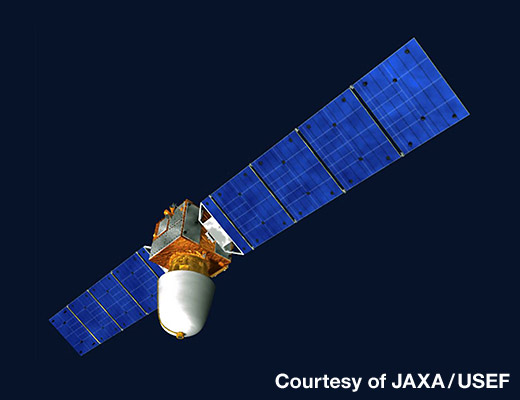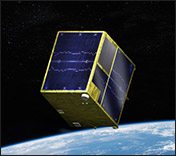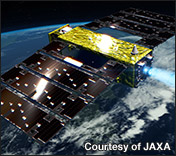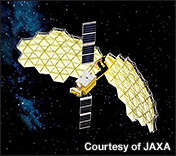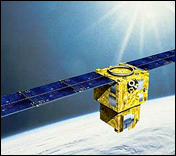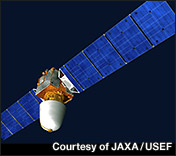Satellite ProgramsEngineering Test Satellites
RAISE-2
Platform for developing small 100kg-class satellites equipped with standard components and equipment
-
Client
Japan Aerospace Exploration Agency (JAXA)
-
Launch date
FY2021
-
Launch Vehicle
Epsilon
-
Launch site
Uchinoura Space Center (USC)
-
Orbit
Sun synchronous orbit
-
Mass
Approx. 1t
-
Electrical power
200W
-
Design life
1 years or longer
-
Responsibilities
Prime contractor
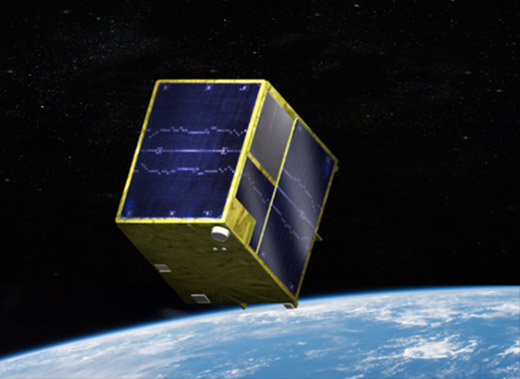
SLATS
Developing super low orbits and creating a new satellite
-
Client
Japan Aerospace Exploration Agency (JAXA)
-
Launch date
December 23, 2017 (JST)
-
Launch Vehicle
H-IIA
-
Launch site
Tanegashima Space Center
-
Orbit
-
-
Weight
383 kg
-
Design life
2 years or longer
-
Operation
End DateOctober 1st, 2019
-
Responsibilities
Prime contractor
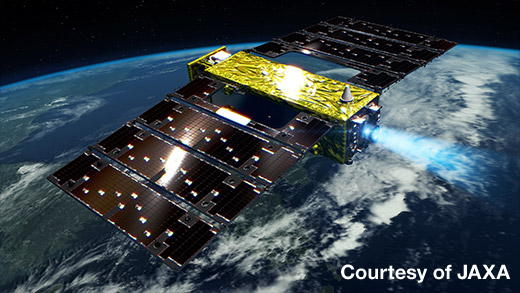
ETS-VIII
ETS-VIII is a geostationary satellite bus mounted with two of the world's largest antennas (19mx17m), developed primarily to establish and verify technologies such as higher-traffic processing, mobile telecommunications, and high-accuracy satellite positioning, all of which are essential for space missions at the beginning of the 21st century.
The ETS-VIII's missions are to develop technologies, and test and verify them in space. The targeted technologies include mobile-satellite communications, mobile-satellite digital multimedia, and basic technologies for building satellite positioning systems, through large-scale geosynchronous satellite bus technologies for 3-ton class satellites -- the world's largest class in the early 2000s. The ETS-VIII also targets such large-scale deployable antenna technologies as 13 meter-class deployable antennas, and high-accuracy time standard systems and other positioning equipment.
-
Client
JAXA
-
Launch date
December 18, 2006
-
Launch Vehicle
H-IIA
-
Launch site
Tanegashima Space Center
-
Orbit
Geostationary orbit
-
Mass
Approx. 5.8t (at launch)
-
Electrical power
7,500 W
-
Design life
10 years (satellite bus)
3 years (mission craft) -
Responsibilities
Prime contractor
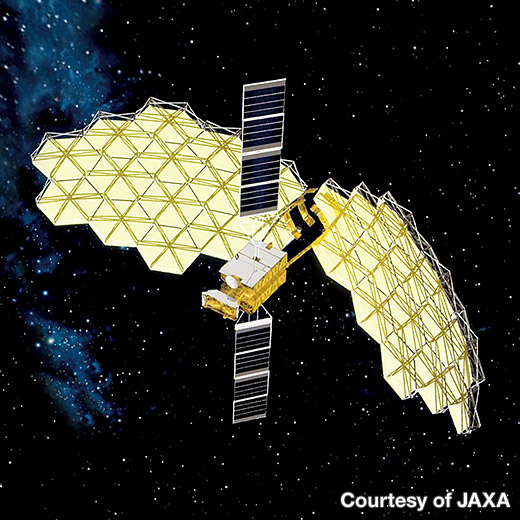
SERVIS
Verifies the performance of parts and equipment supplied by the private sector in space by applying to actual spacecraft for low-cost, short-cycle, high-quality (CFB) satellites.
The development of SERVIS 1 and 2 will result in a low-cost commercial bus.
Space Environmental Reliability Verification Integrated System (SERVIS) Mission: Verify civilian parts and equipment in space for low-cost, short-cycle, high-quality (CFB) satellites. The development of SERVIS 1 and 2 will result in a low-cost commercial bus.
-
Client
Institute for Unmanned Space Experiment Free Flyer (USEF)
-
Launch date
#1 : October 30, 2003
#2 : June 2, 2010 -
Launch Vehicle
#1 : Rokot
#2 : Rokot -
Launch site
#1 : Plesetsk Space Center, Russia
#2 : Plesetsk Space Center, Russia -
Orbit
#1 : Altitude: 1,000 - 1,500 km Circular orbit, Inclination: 30 deg.
#2 : Altitude: 1,000 km or higher Circular orbit, Inclination: 97 deg. -
Mass
#1 : Approx. 980 kg
#2 : Approx. 980 kg -
Electrical power
#1 : 1,200 W
#2 : 1,300 W -
Design life
#1 : 5 years
#2 : 1 year -
Responsibilities
Prime contractor
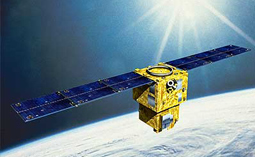
USERS
USERS is an on-orbit experimental spacecraft system developed by USEF under a contract with Ministry of Economy, Trade and Industry (METI) and New Energy and Industrial Technology Development Organization (NEDO). It not only allows for long-term orbital experiments on a wide variety of challenges including the production of superconducting materials in the well-established environment, but also is capable of autonomously landing back on Earth.
UERS is a space experiment system developed by the Institute for Unmanned Space Experiment Free Flyer (USEF), under contract by the Japanese Ministry of Economy, Trade and Industry and the New Energy Development Organization (NEDO).
Missions:
- Experimental manufacture of high-temperature superconductive materials
- Verify technologies and components developed for terrestrial equipment in space applications
- Establish autonomous recovery system
-
Client
Institute for Unmanned Space Experiment Free Flyer (USEF)
-
Launch date
September 10, 2002
-
Launch Vehicle
H-IIA
-
Launch site
Tanegashima Space Center
-
Orbit
Altitude: 300 - 600 km
-
Mass
Approx. 1.5t (at launch)
-
Electrical power
2,500 W (BOL)
-
Design life
--
-
Responsibilities
Prime contractor
